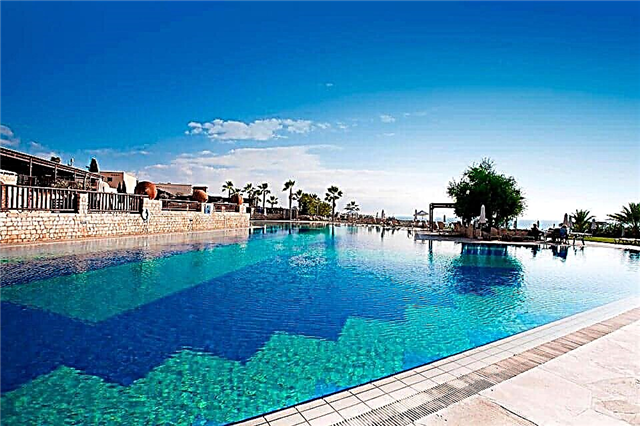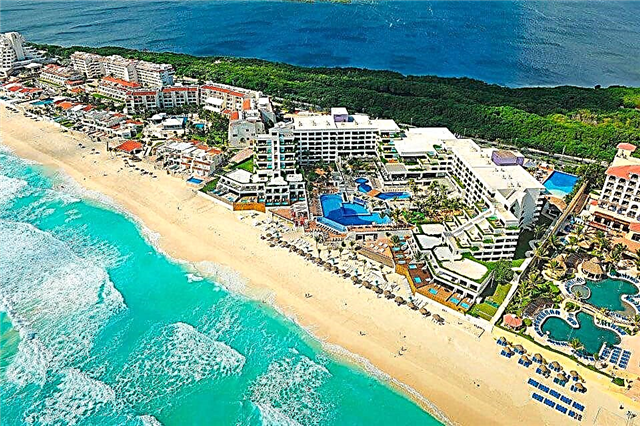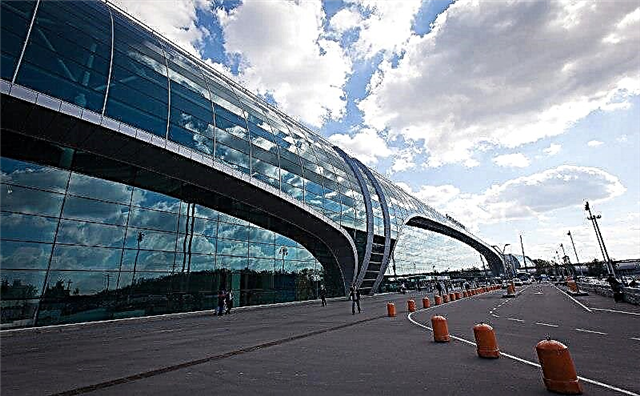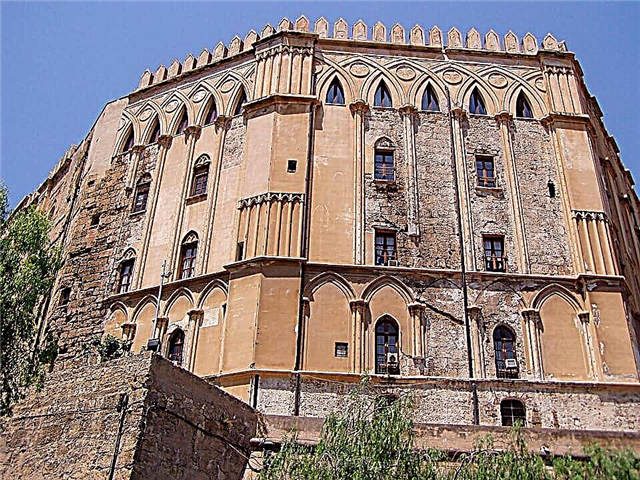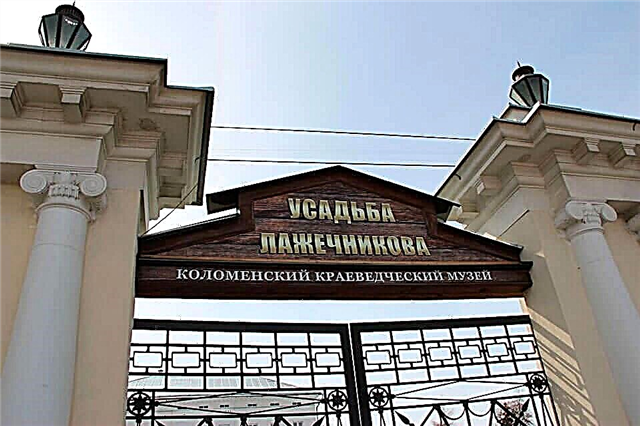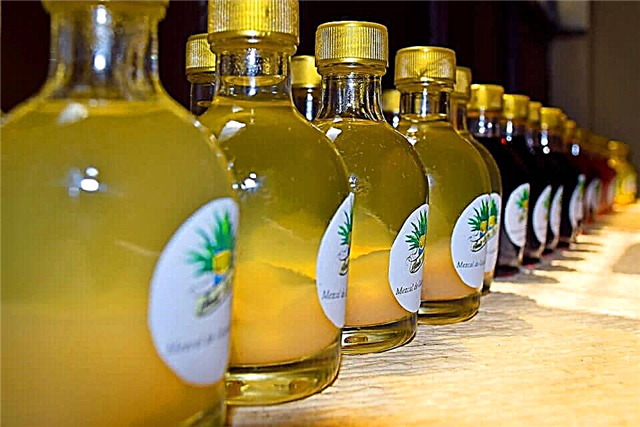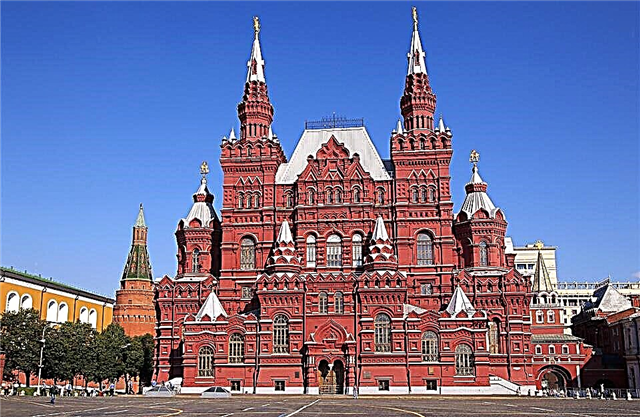For whatever purpose we come to Moscow, we will definitely spend some time exploring interesting places in the capital. What to see in Moscow first of all? Not an easy question, but let's try to answer it. So, we offer a list, photos, descriptions and ratings of the best attractions in the capital, which should not be missed.
Moscow Kremlin

It is impossible not to visit the Kremlin - this is the "heart of the capital". Moreover, the tickets that you purchase will allow you to see a lot. True, after the Soviet period, only half of the 50 historical buildings remained here. You will enter the Kremlin through the Kutafya Tower.
See the cathedrals that are "pearls" of Russian architecture - the Assumption, Annunciation and Arkhangelsk, admire the Ivan the Great bell tower. You can also take a picture with the Tsar Cannon and Tsar Bell.
Next to the relatively modern building of the State Kremlin Palace (1961), there is the Senate, where the first persons of the USSR worked. Attention will be attracted by the Faceted and Armory Chambers (the latter also houses the Diamond Fund). Falcons and hawks live in the Taynitsky Garden, which were brought in to chase pigeons from the territory of the Kremlin.
The Red Square

One of the most ancient and certainly the most famous square in our country. Once it was wooden, and since this area was often burned, the square was called another name - "Fire". Only in the 19th century. it was lined with stone.
Walking along the cobblestones of Red Square is already touching the history. There is also the Historical Museum and the beautiful St. Basil's Cathedral, named after the famous holy fool who lived during the time of Ivan the Terrible. Vasily was never afraid to tell the tsar the truth. By the way, the official name of the temple is different - the Intercession on the Moat.
Opposite the Kremlin is GUM - the main department store, located on the site of the old Upper Trading Rows. If you wish, you can see the mausoleum of V.I. Lenin - in the Soviet years it was a real place of pilgrimage.
And of course, you will want to take a photo next to the famous monument to Minin and Pozharsky. It should be remembered that only amateur cameras are allowed on Red Square. Special permission is required with professional cameras.
Streets Tverskaya and Old Arbat

Without a walk along these famous streets, it is difficult to fully feel that you have visited the capital. Where Tverskaya Street is now located, in the 14th century. ran the way from the Kremlin to Tver, hence the name.
Later, Tverskaya became the most "popular" street in the capital, and it was almost impossible for mere mortals to settle on it. The houses of the richest residents and those close to the court were located here. There were only 5 churches here.
Unfortunately, during the Soviet period, many historically significant buildings were demolished. But even today you will see the exhibition hall "New Manezh", the Yermolova Theater, the Chekhov Theater, the monument to Yuri Dolgoruky on Tverskaya Square and the building of the City Hall.
In addition, there are memorial plaques on almost every house. The most famous poets, writers, artists, statesmen lived and worked on Tverskaya.

Someone still perceives the Arbat as a semblance of a market where you can buy souvenirs. Therefore, it will be even better if you find yourself here with a modest amount in your pocket and do not pay attention solely to retail outlets. Here you can wander, looking at every house (there is a pedestrian street, there is no transport here) There are many artists, they paint and sell their paintings, and there are also a huge number of souvenirs, but the main thing is that the Arbat is a living history.
Representatives of such famous noble families as Sheremetevs and Golitsyn lived here, this street remembers Alexander Pushkin, Lev Tolstoy, Konstantin Balmont, Marina Tsvetaeva, Andrey Bely. In one of the Arbat lanes there is a house where Bulat Okudzhava grew up, and now there is a monument to the bard on the Arbat. And the fans freeze for a long time at the Wall of Tsoi, covered with quotes from his songs.
Cathedral of Christ the Savior

In this main church in Russia, on holidays, divine services are led by the Patriarch himself. Bishops' councils also gather here. But guests can also visit the Cathedral of Christ the Savior.
It is recommended to come here as part of a tour to find out more interesting facts. It is called a “memorial temple”, “a martyr temple” ... it was originally built at the end of the 19th century. in honor of the heroes of the Patriotic War of 1812, designed by Konstantin Ton. Its construction took almost 50 years.
Under Stalin, the temple was blown up, it was supposed to give way to the Court of Soviets, but the Great Patriotic War prevented the implementation of this project. In subsequent years, there was a swimming pool "Moscow". In the early 90s of the last century, it was decided to restore the temple. The final stage of the work was supervised by Zurab Tsereteli. As a result, the temple differs in many ways from its predecessor.
Monasteries: Novodevichy, Donskoy, Novospassky

The Novodevichy Convent was founded in the 16th century. Grand Duke Vasily III, after Smolensk returned to the Moscow principality. Its name is probably due to the fact that the monastery was intended for girls, and since there was already an older monastery in the capital, the prefix "new" appeared. Maidens and women from noble families, including the royal family, found shelter here. During the war of 1812, the monastery was miraculously not blown up. During the years of Soviet power, Novodevichy was naturally closed.
Today it exists as part of the Historical Museum, and services are held there at the same time. It houses rare icons and books dating back to the 16th century. Particularly interesting is the monastery cemetery, where Gogol, Chekhov and other famous people are buried.

Donskoy monastery. According to legend, in 1591 the icon of the Donskoy Mother of God saved Moscow from the troops of Khan Kazy-Girey. In honor of the miraculous image, the monastery was founded. Its architectural structures were erected during the reign of Princess Sophia, Peter the Great and other rulers.
After the revolution, the Museum of Architecture was located here. The monks came here again in 1991. In 1992, the crypt of Patriarch Tikhon was found here. Famous military men, writers, representatives of noble families are in the cemetery at the monastery. The Novospassky monastery was founded in the middle of the 15th century.
He defended the city from the southeast with its powerful walls: at first wooden, and starting from the 17th century. - stone. Noble boyars, including those from the Romanov family, were buried in the monastery cemetery. In the 90s, their tomb was restored.
Estates: Tsaritsyno, Kuskovo, Arkhangelskoe, Ostankino

Tsaritsyno is a palace and park ensemble in the pseudo-Gothic style, which was founded at the end of the 18th century. by order of Catherine P. Two famous architects worked on its creation: Bazhenov and Kazakov. Now it is a museum-reserve. Kuskovo is the former possession of the Sheremetev Counts.
To visit it, you need to go to the south of the city. Several buildings of the 18th century have survived here, including the palace, where there are many interior elements of the past and paintings by domestic and foreign masters.

Arkhangelskoe is also a palace and park ensemble. It is very pleasant to walk here, so it is better to come in the morning - and for the whole day, so as not to rush to explore 3 parks: Italian, French and English. Pay attention to the palace itself, the temple-tomb of the Yusupovs, the temple of Michael the archangel, erected back in the 17th century and the so-called Tower of the old witch.
Ostankino is a magnificent ensemble of the 18th century. It was built according to the design of Count Nikolai Sheremetev. The palace became his summer residence, and the theater was the center of the ensemble. Famous architects worked on the creation of Ostankino, and the park was laid out and looked after by eminent gardeners.There is also a famous ancient temple of the Life-Giving Trinity.
Museums

Tretyakov Gallery - the world famous museum was opened in the middle of the 19th century. entrepreneur and philanthropist Pavel Tretyakov. First, he began to collect a collection of paintings, and then donated it to Moscow.
Today you can see the rarest icons, paintings and sculptural works of great masters. The Pushkin State Museum of Fine Arts was opened in 1912. Works by foreign masters of art from ancient times to the present are collected here.
The complex includes about 3 dozen buildings and structures, and its collection includes about 700 thousand exhibits.

Historical Museum - founded by order of the emperor at the end of the 19th century. A special building was erected for him on Red Square - an unprecedented case. By the early 2000s, after restoration, the museum acquired its original appearance. It stores over 5 million exhibits that tell about the history of our country from ancient times to the beginning of the 20th century. The Cosmonautics Museum was opened in 1981 in honor of the space explorers.
It contains original documents, photographs, films about the exploration of outer space, things of astronauts. And also - works of art dedicated to this topic. In recent years, interactive exhibits have been added.
Zoo and Planetarium

The excursions, which we will talk about now, will delight, first of all, children, but they will also be interesting for adults. The Moscow Zoo was opened in 1864 and was located at first on Presnenskie ponds, where Muscovites loved to walk. Initially, about 300 animals were settled in it. In the early 90s of the last century, the state of the zoo could be called emergency.
After reconstruction, it opened in 1997, the year of the 850th anniversary of Moscow. Today it is a beautiful modern zoo that contains animals from all over the world. If you wish, you can become the guardian of one of them, which will be indicated by a special sign near the aviary. Various educational programs are held on the territory of the zoo.

The planetarium is one of the largest in the world, and in our country it is the oldest. Built in 1929. Created to popularize knowledge. Here you can watch various space objects, listen to lectures, watch films in a 4-D cinema, visit museums, buy souvenirs and even taste "astronaut food".
The Bolshoi Moscow Circus is truly the largest circus in Europe. It can accommodate over 3 thousand residents at the same time. It was opened in the spring of 1971. Today there are several arenas here - horse, water, ice and others, which can quickly replace each other.
More than 100 programs are presented on the arena of the Moscow circus, artists of all genres perform in front of the audience. The circus on Tsvetnoy Boulevard is the oldest circus in Moscow and all of Russia today bears the name of the clown Yuri Nikulin.
For the first time, viewers entered it in the fall of 1880. At first there were only a few rows of chairs. Over time, the circus was completed and expanded. Famous domestic and foreign artists - Durovs, Trutsii, Kio and others - performed there. 15 years - until 1997 - the circus was headed by Yuri Nikulin.
The Bolshoi Theatre

The construction of the Bolshoi Theater began at the end of the 18th century. It was erected three times, and all 3 times the buildings were destroyed by fire. Only in 1856 the theater that we see today was built. The project belonged to the architect Albert Kavos, and the famous Pyotr Klodt took part in the creation.
During the Great Patriotic War, a bomb hit the Bolshoi Theater, fortunately, the building did not suffer irreparable damage. In the period 2005-2011. the theater was undergoing reconstruction. They tried to give him the look he had before the revolution.
The best artists of both Russia and other countries of the world have performed and perform on the stage of the Bolshoi. In total, over 800 works were shown here. And now, for the third century, at the entrance to the Bolshoi Theater, the phrase has been heard: "Is there an extra ticket?"
Poklonnaya Hill and Victory Park

Poklonnaya Gora once looked like a real mountain, climbing which one could look around Moscow. Our ancestors did just that, bowing to the "white stone" from here. Napoleon, who dreamed of conquering Russia, looked at the burning Moscow from Poklonnaya Hill.
And from here our troops went to the front during the Great Patriotic War. Today, when multi-storey buildings have grown in the capital, there is no large view from Poklonnaya Gora. But the Victory Park is perfectly visible from here. The idea of creating the park was born in 1958.
Residents of the whole country contributed as much as they could to its construction. Everyone wanted to take a material part - in the end, millions gathered. The opening of the park was timed to coincide with the 50th Victory. There are many symbolic buildings here.
The height of the Victory Monument is 141.8 m. - for our people, the war was "1418 fiery days and nights." There is also the Museum of the Great Patriotic War. And also erected - an Orthodox church in honor of St. George the Victorious - the heavenly patron saint of soldiers, memorial: a mosque, a synagogue and a Catholic chapel. Indeed, at the fronts and in the rear, people of different faiths fought for the Victory. The fountains of the park are illuminated in red at night.
Gorky Park

Gorky Park was a favorite resting place for townspeople back in the 30s of the last century. It resembled a kind of "state within a state". In addition to attractions and other entertainments, it had its own post office and savings bank, a first-aid post and a police station. Today Gorky Park has acquired a modern look. Of course, there are cafes and eateries here, there is a wooden deck on the beach - by the way, there is internet in this area.
In the park, you can rent a bike, learn yoga, dance or fitness for free - instructors give lessons to everyone. And here it is also pleasant to sit on the grass, walk along the paths ... The love of the residents of the capital for the park has remained unchanged.
VDNKh

VDNKh is an exhibition of achievements of the national economy. Today it is the largest complex performing entertainment and educational functions. In the Soviet years, the exhibition was intended to demonstrate the successes of socialism, although citizens came here more quickly to at least look at the abundance, which in reality did not exist.
During the years of perestroika - and the subsequent 90s - the exhibition turned, in fact, into a huge market. Today VDNKh has blossomed again, and thousands of people come here every day to visit trade pavilions, see expositions, ride attractions, and attend literary events. The pride of VDNKh is a huge oceanarium, an interactive museum of cosmonautics, and in winter there is also a skating rink.
"Worker and Kolkhoz Woman"

Monument designed by V.I. Mukhina, represented the USSR at the 1937 exhibition in Paris. Raising high the tools of labor - the hammer and sickle - the young man and the girl personified the power of the working people. Ten years later, Worker and Kolkhoz Woman became the symbol of the Mosfilm film studio.
In 2003-2009. reconstruction was carried out. The monument was unveiled again on December 4, 2009. There is a museum dedicated to the history of sculpture and interesting facts connected with it in the pedestal.
7 "Stalinist" skyscrapers

Houses built between 1935 and 1960 called "Stalin." The most famous are 7 skyscrapers in the capital. The main building of the Moscow State University was founded in 1949. Its height with a spire is 240 m, it has 36 floors. The high-rise on Kotelnicheskaya embankment has 26 floors, its height is almost 180 m. The building of the hotel "Ukraine" was completed in 1957, the height is 206 m.
The building of the Ministry of Foreign Affairs was commissioned in 1953. It has 27 floors, and its height is over 170m. The skyscraper on Kudrinskaya Square dates back to 1954. If you count the spire, the structure is higher than 150 m. The skyscraper on Krasnye Vorota Square has 24 floors, and the height of the Leningradskaya Hotel is 136 m.
GuruTurizma recommends the following hotels:
Sparrow Hills and Ostankino TV Tower

The observation deck on Vorobyovy Gory is a must-see for tourists. The site is located at an altitude of 80m. and from here there really is a beautiful view of the center of the capitalAnd you can admire it for free. The Ostankino Tower, which has become one of the symbols of Moscow, was built in 1967.
Its height is 540m., And once it was the tallest structure on our planet, and now it takes 6th place. From here you can see Moscow from the observation deck located at an altitude of over 300m. Over the years of the tower's existence, this has already been done by millions of residents of the capital and its guests.
Moscow Metro

as our compatriots and foreigners admit, this is not just an “underground”, but a real work of art. No wonder 44 stations are cultural heritage sites. Among the most beautiful are called "Mayakovskaya", which won the Grand Prix in New York.
The stations Kropotkinskaya (Brussels) and Krasnye Vorota (Paris) received similar awards. A real palace with an exquisite interior resembles the Komsomolskaya station. Included in the list of the most beautiful in the world, luxuriously decorated "Kievskaya".
The station "Revolution Square" can be attributed to the most original and memorable ones. People who first arrived in the capital are in no hurry to get out of the subway, admiring it. It is impossible not to mention the "Novoslobodskaya" with its illuminated stained-glass windows, and the unusually elegant because of the skillfully selected colors - "Arbatskaya".
The sights of the capital of our Motherland are innumerable. It is a thankless task to choose the most significant ones. And yet, we tried to focus on those objects where you need to visit first of all, if you want to get to know Moscow and get to know this beautiful city better.

